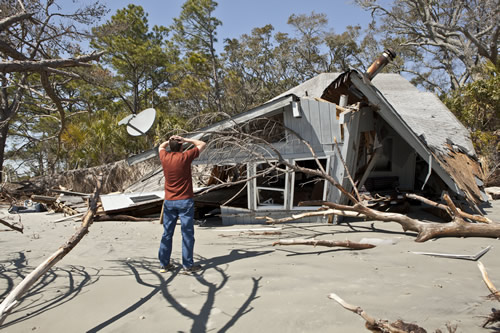Prediction of RBNS and IBNR claims using claim amounts and claim counts
This paper proposes a stochastic model for loss reserving based on incremental reported claim numbers and paid amounts, and which serves to predict Reported But Not Settled (RBNS) and Incurred But Not Reported (IBNR) claims separately.
There are a number of stochastic models that can be used to estimate reserves in non-life insurance mathematics.
Most of these models have been designed to deal with data which has been aggregated in some way, as this often makes the presentation of the data more convenient. However, this aggregation may lead to a loss of information, which in some cases can give relatively poor quality estimation and prediction figures for outstanding liabilities. This has been the subject of some research on reserving.
Models based on individual claims tend to be very detailed, complex and rely on extensive data to estimate parameters. For the practising actuary however, these models have limitations. They are difficult to implement because the use of data at an individual level is computationally challenging. Furthermore, large data sets are hard to obtain in insurance companies, and it is often the case that a model will only get used in a practical situation if it can be applied to a wide variety of data sets across a wide variety of business lines.
Therefore the choices available are (1) to use individual data, which is theoretically appealing but computationally difficult, or (2) to use aggregate data, which is an easier method to deal with but one which provides less complete results.
This paper proposes a stochastic model for loss reserving based on incremental reported claim numbers and paid amounts, and which serves to predict Reported But Not Settled (RBNS) and Incurred But Not Reported (IBNR) claims separately. The paper takes the approach of building a model for aggregate paid claims from basic principles at the level of individual data. The research suggests that the use of the aggregated counts data can improve reserving accuracy.
The proposed method includes data on incurred counts, enabling us to model payment patterns for RBNS claims. Thus we separate the reporting delay (in the incurred counts) from the payment delay (in the paid claims). In contrast, the widely used chain ladder method simply includes all sources of delay in a single development pattern.
Following the introduction, Section 2 of the paper defines the notation and describes the data assumed available. In Section 3, the theoretical development is given, demonstrating how the claims development is split into the IBNR and RBNS delays. In Section 4, the model to be applied is shown. Section 5 focuses on prediction, and Section 6 examines results based on the model. The paper's conclusion is covered in Section 7.
The complete draft paper (2010) can be downloaded from the link below.




